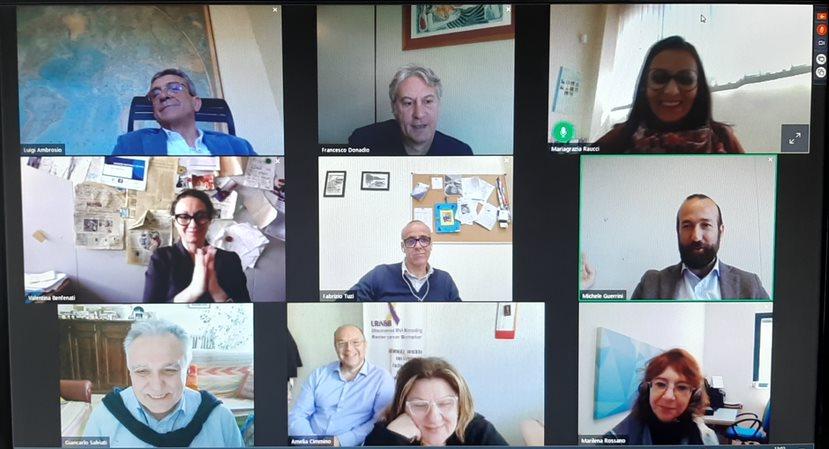How innovative public procurement could contribute to save lives? PPI4MED Italy holds a workshop on bio-medical innovation

CNR researchers of the bio-medical sector met representatives of public procurers, interested companies, start-ups, and associations to involve stakeholders in the implementation of innovative processes and technologies for the treatment of important diseases such as cancer, inflammation, or psychiatric disorders.
The workshop was organized on the 26th April 2023 in the framework of PPI4MED project activities dealing with National and cross-border living labs, and “Precompetitive analysis of promising products and services for public procurement of innovation”.
It is a fact that in these years, a Living Lab has been created and many activities have been accomplished. As an example of these activities, we can highlight the participation in fairs, the organization of workshops, the creation of a Policy Maker Group (PMG), and the first survey on Public Procurement of Innovation (PPI) in Italy.
Among the speakers of the workshop, it is worth mentioning the speech of Fabrizio Tuzi, as PMG representative, who illustrated the first results for drafting the White Paper on PPI in Italy. He underlined the similarities and differences with other forms of procurement as well as the needs and gaps with the aim of implementing the use of PPI.
The public domain has a main role to play in the health sector, in particular in the therapies for diseases such as psychiatric ones and the fight against them. Some new diagnostics and innovative therapies could really help fight against such diseases nevertheless, the public funding is not enough and there is still a lack of mutual knowledge with SMEs to go further together in this way. In fact, these innovative research results need experts and small companies that can develop devices in a proper way and public institutions willing to give them a chance.
It is the case of Amelia Cimmino, a researcher at the CNR-Institute of Genetics and Biophysics (IGB), and Ferdinando Febbraio, from the CNR-Institute of Biochemistry and Cell Biology (IBBC), that discovered diagnostic methods and medical devices for early diagnosis of bladder cancer. They asked for a patent, and they are ready to develop such innovation to have precocious and not invasive diagnostics.
It is also the case of the 2D material-based multiple oncotherapy against metastatic disease, illustrated by Giancarlo Salviati and developed with other scientists.
During the workshop, some companies asked for more information and for opportunities for collaboration and it would be a good result if the PPI4MED project could really contribute to achieving some of the scientist’s objectives and avoid hundreds of dead people who were not able to recognize cancer in its early stage.
As illustrated by Maria Grazia Raucci, CNR-Institute of Polymers, Composites, and Biomaterials (IPCB), bio-nanomaterials,- can contribute to cancer therapy.
Another innovation very useful for many companies is the new bioelectronic technology targeting glial-mediated neuron modulation, developed by the CNR – Institute of Organic Synthesis and Photoreactivity (ISOF) and illustrated by the researcher Valentina Benfenati.
Glial cells play an essential role in maintaining the proper functioning of the nervous system. They are more abundant than neurons in most neural tissues and provide metabolic and catabolic regulation, keeping the homeostatic balance at the synapse. Chronic pain is generated and sustained by the disruption of glia-mediated processes in the central nervous system, resulting in unbalanced neuron–glial interactions. A specific aspect is the study of brain cells called astrocytes, the cells in the brain that are devoted to brain homeostasis. With their end feet, astrocytes encompass and regulate synapses. Astrocytes and other glial cells have emerged as key players and possible key targets in neurodegenerative diseases.
Other interesting speech during the workshop also regarded the use of engineered biohydrogel as a bio-factor for tissue regeneration, by Luigi Ambrosio, CNR-IPCB, and the engineered antibody fragments for therapy and diagnosis by Menotti Ruvo, CNR-Institute of Biostructures and Bioimaging (IBB).
A round table was also organized to exchange information and favour bilateral dialogue with stakeholders.
Well-being and welfare are subject to research and development, to their implementation, and their effective use.
The workshop represented a little “momentum” that needs a great echo to engage stakeholders in the daily efforts of our researchers to find proper and affordable solutions for a healthy society.









